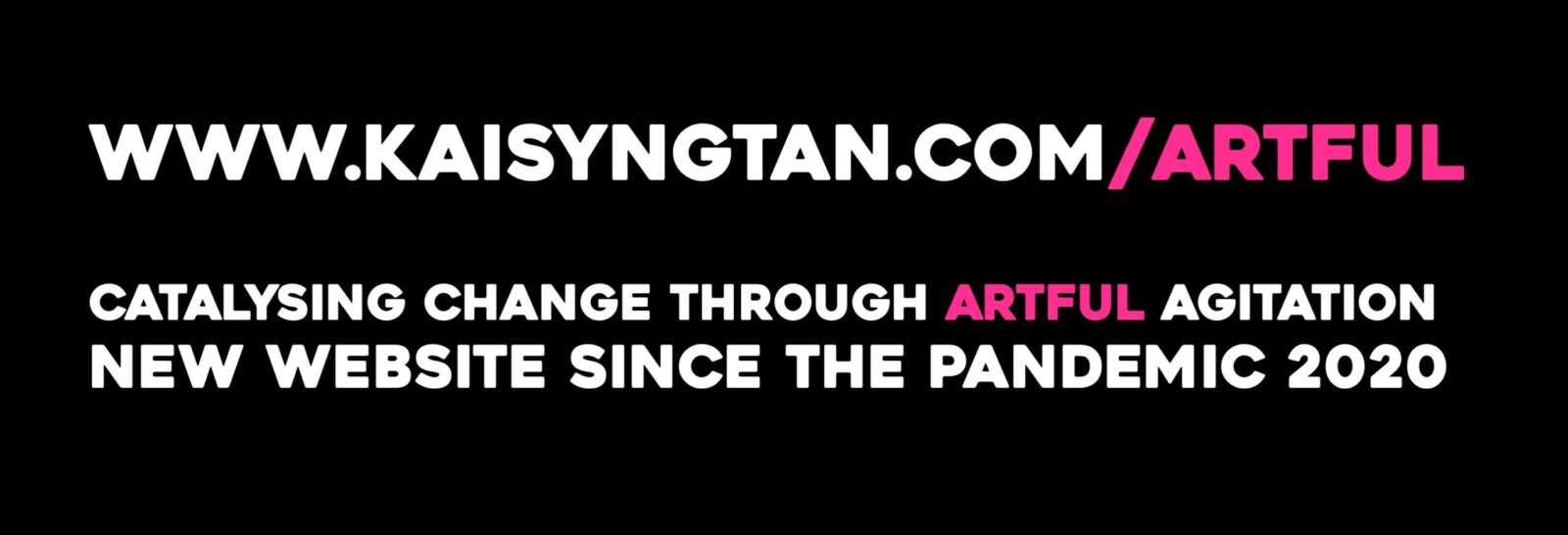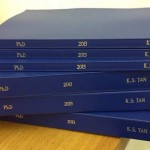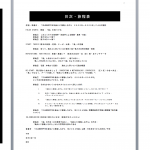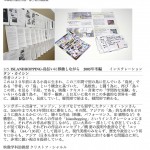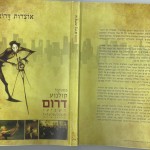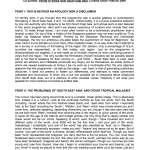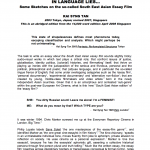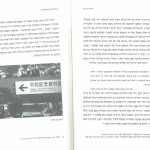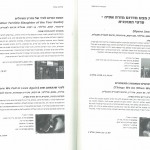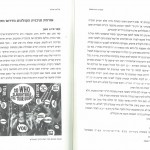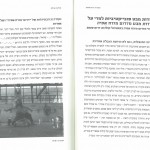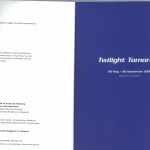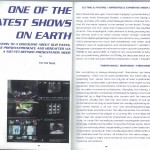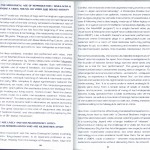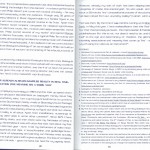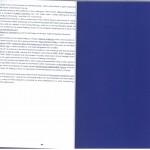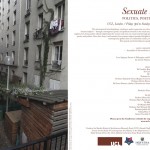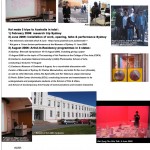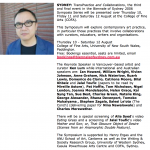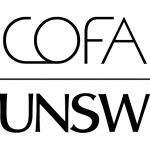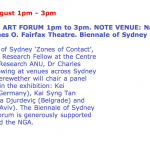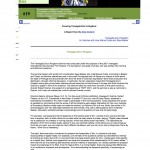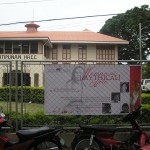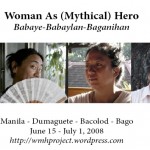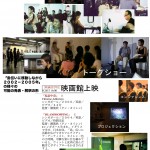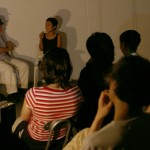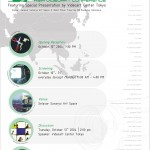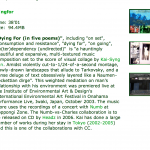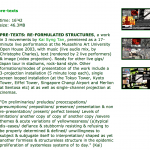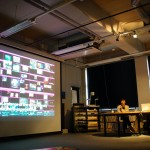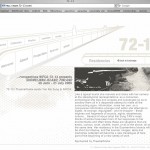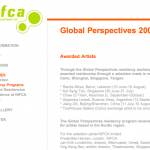Kai’s current and past research interests include:
- the investigation of the physical and poetic processes of the popular exercise of running as a creative, social and intellectual toolkit (including the correlation between the runner’s high and creativity)
- risk-taking, stim-seeking, playfulness and absurdity as ’gentle anarchism’ and the ideological position of being an ‘old child’ (after Lao Zi)
- the body as sight/site of performance and protest; body as world, world as body
- the city as gallery and centerstage; the city as protagonist
- the hybrid genres of the performance- lecture and cine-essay as powerful
- collage, juxtaposition and collisions (of practice with writing and research; of text with image; of western and non-western concepts and practices; of fact with fiction; of the personal/autobiographical/micro with the meta/macro/big-picture; inter- or cross-disciplinary collaboration) to generate surprising and productive processes and outcomes
- neurobiological diversity; (dis-)ability (of/by self/society); visual-thinking; the processes of the creation of artworks as examples of difference as well as creative and critical ways to un-pack such labels.
[ppmaccordion][ppmtoggle title=”I. An idea – and practice – of ‘research'”]
My work as a researcher is closely intertwined with my other roles as educator, artist and curator. For instance, I often teach my own research, then go on to refine it based on what I learn from teaching it. I carry out my research via, well, research, which I take to mean thinking, intellectualising, writing, speaking, discoursing, arguing, making points, putting ideas forward). As well as practice: doing, making, making points and arguments, walking or rather running the talk (hence the first-person starting point in most/all of my work – another story), embodying, experimenting, running tests, putting ideas and proposals and recommendations forward – all of which, as it goes without saying, involves thinking and intellectualising. My practice is, in the first place, rather discursive, and my discourses practical. In other words, my films, installations, text, performances etc can be quite conceptual, while at the same time/on the other hand/or rather foot, my writing aims to be concrete, tangible, playful, material. The tension, I think (ahem), is the point – isn’t this what makes research exciting! In the attempt to reflect the osmosis/synthesis of this dynamic. I tag myself research-practitioner, reflective-practitioner (after Schon), artist-researcher. Well, you get the drift. The importance of the interdependency between practice and research explains why my text is never fully abstract, why they always include my own practice too. That said, I do not necessarily use text to apologise for/ ‘clarify’ (why should text do that?) my practice, but instead re-perform them, via text. I consider my practice as a crucial, indispensible first-hand primary research/field work, in my written work. This is related to why I always write (and make work) from a highly personal point of view, of I (which I’d arrived at via Daoism, Buddhism, Sarte, Barthes, Beckett, Acker, Cioran, Pessoa, Montaigne, Chris Marker, Agnes Varda etc etc), which I argue is as – or even more rigorous – than other voices. It is about subverting the notion of a singular, objective hegemonic, all-powerful, centralised voice. And then having fun by complicating/layering/multiplexing that ‘I’ into a sea of subjectivity …
[/ppmtoggle] [ppmtoggle title=”II. Strands”]
1. ‘Running’ as theme and approach (PhD research 2009-2013)”]
My practice-related Fine Art PhD thesis performs a discourse of ‘trans-running’ – running physically and poetically, and running as both subject and approach, concept and action – as a playful methodology to transform our world today.
In my written thesis, I proposed that trans-running can enable us to claim ownership of the city and resist political control in the ‘real world’, as well as dodge online surveillance and assume multiple viewpoints in the ‘digital world’. Running physically can cause the ‘runner’s high’, which I argued can create a euphoric and poetic mode of thinking that we can apply to explore discourses. Since ‘discourse’ means ‘running from place to place’ in Latin, and as runners were historically ambassadors, I additionally propose the ‘trans-runner’ as the new ‘running-ambassador’, capable of activating new discourses and creating new knowledge. My studio practice, entitled Kaidie’s 1000-Day Trans-Run 12.12.2009 – 09.09.2012 consisted of a large body of artworks. It features ‘Kaidie’, a ‘trans-runner’ who explores trans-running as a mode of art. In the narrative, Kaidie runs for 1000 days to look for the ‘point of life’. Audiences can run physically or metaphorically alongside, by ‘following’ her on social media, and helping her in her quixotic quest. The artwork itself runs the gamut of media such as film, GPS drawings, ‘tweets’, and durational performance. For the duration of my research, I picked up long-distance running, and played Kaidie (who could be read as a nuclear-fuelled version of me). For the period that the project ran, my website welcomed more than 1.3 million unique visitors.
A running-ambassador myself, I ‘ran’ back-and-forth between discourses to bring to the audience/reader the message of trans-running. Apart from the aesthetics of the hypertext, neuroscience and rhetoric, I drew on the Chinese Daoist wanderers’ poetic, techno-sceptic and anarchic ways to generate a playful, performative practice of writing and art-making. The entire thesis could be understood as an artwork that performs the discourses of the trans-runner. It mobilises ‘run’-related idioms, wordplay, alliteration, etymology and correlations like the metaphor. I invited the audience/reader to perform trans-running themselves, to better grasp it. Trans-running aimed to be trans-cultural, trans-disciplinary and transgressive. One of its goals was to introduce ‘running’ to artists and researchers in the ‘art word’ as a counter to the well-studied tradition of walking, and as a mode of correlating distinct discourses. Activating non-Western and non-canonical discourses, I also aimed to contribute to debates about cultural difference through my research. Furthermore, integrating theory and practice, my thesis aimed to contribute to the discourses of the ‘Fine Art research’.
2. Restlessness as theme and approach
Before I formalised trans-running, many of my artworks of the past 20 years addressed restlessness as a subject. They can be aligned with the travelogue genre of film and literature. For instance, I ‘swam’ in a previous work (Chlorine Addiction 2001). Swimming was my metaphor for my sense of feeling lost as I returned ‘home’ after several years abroad. I had also ‘hopped’ from island to island in the archipelago of Japan (Islandhopping 2002-2005), Hopping was my way of gathering, sampling, picking-and-mixing sound, images and memories, which I will then rearrange and juxtapose to deliberately draw out new meanings. I also wanted my audiences to also ‘hop’ about as they experienced my work, and thereby formulate their own.
My work also has a restless approach. They were often densely-collaged, cutting across genre, discipline, media, and school of thought. I work in video, text, installation and performance, in the gallery space, cinema, social media platforms, and everyday life. The same work can itself often be re-formulated and re-contextualised. My works have been exhibited in film festivals (Yamagata International Documentary Film Festival), shopping malls (a video tour The Rather Terrible Slaughter of the Tour Guide! in a popular shopping area during the Singapore Art Show 2007), in a converted school (The Fool On A Stool Drawing Margins To Exercise Common Sense), in the white cube (ASK Gallery in Tokyo) and in a subway station (The Amazing Never-Ending Underwater Adventures!). I have also appeared on stage as a performer, against the backdrop of my own large video projections in a theatrical production in Dom Musiki in Moscow (2008).
Restlessness is also the hallmark of my own life as a person. I have lived my life ‘on the run’ in the East (Singapore, Japan) and West (London, Chicago) for a decade. My work and my being resist the notion of a permanent home. My restlessness is a political, poetic and personal methodology of resistance, against the status quo, against things ‘coming to a standstill’, and against stagnancy, and against being stuck in places that are physically and/or ideologically small.
3. Other strands:
3a. City as subject and site; city as theme park
Upon returning home after 3 years in Japan, I began appearing in my own work. This was my response to a place that I felt was increasingly resembling a Theme Park. Yet, instead of merely criticising from a distance, I positioned myself as someone in cahoots with the authorities. Hence, I appear amidst the mise-en-scene and perform, as if a prop, mascot or performing monkey – as the city, too, performs. (For instance: permanent public installation The Amazing Neverending Underwater Adventures!; video tour The Rather Terrible Slaughter of the Tour Guide 2007)
3b. Cine-essay; alternative non-fiction; video art; word and image
More generally, I am obsessed with ‘reality’ in all its guises: actual, virtual, digital, imagined, manipulated, on screen and off. I explore this from a fiercely personal and playful, position, with a generous pinch of salty irony. For a large part of the past twenty years, I did this largely via the lens – and literally so – of the film and video camera. I would research, make and/or write about and teach cine-essays and other alternative forms of the non-fiction film or ‘documentary’ and, more generally, video art. I was inspired by the films and / or writings of Sergei Eisenstein, Dziga Vertov, Chris Marker and other French New Wave auteurs. I would also exhibit multiple variations of the ‘same’ film simultaneously, to explicitly problematise the notions of ‘truth’, ‘objectivity’ and ‘history’. A related line of inquiry is the exploration of the relationship between word and image through time in a film. In this, I am again heavily informed by the works of Marker. (Film trilogy All Change!!! 1998; installation Spring.Beauty.Love: Her Story Of Trying To Tell The Three Sisters’ Stories 2001).
3C. Performance art; laptop-performance; performance-lecture
Since 1995, I have experimented with different forms of performances. Over the period of 2002-2005, I worked in, researched and wrote about the ‘laptop performance’. This was when I began to activate my laptop as my instrument-cum-studio. I would mix-and-match video footages ‘live’, like a ‘VJ’, and improvised and interacted with other video artists or musicians. I was based in Tokyo then, and the laptop-performance was in the rage in the art world. My own supervisor Professor Christophe Charles was a proponent and pioneer of the art form. Together we performed in many venues all over Japan. I also began exploring the format of the performance-lecture after I saw one by Walid Raad / Atlas Group in 2004. My version of the performance-lecture is often accompanied by a slideshow or densely-collaged film. Although I look authoritative, I would detourn my audience’s expectations with jokes. Such a paradoxical design allow me to capture the playful spirit of my work, yet highlight its own artifice as an artwork. I would also often play up the tensions between what is on-screen with that which is off-screen and ‘live’, and what I say with what my images express.
[/ppmtoggle] [ppmtoggle title=”III. Future research?”]
With portable technologies becoming increasingly smarter and ubiquitous, I am keen to mobilise them as medium and site. I wish to use them to expand / challenge the formats of the cine-essay and performance-lecture.
I am also eager to continue to explore the relationship between theory and practice, and what it means to be a research-practitioner in art. I will do so not just via research and practice, but via teaching my research students, and learning from them.
I also wish to bring my different roles – of researcher, curator, teacher and artist – together even closer. This interest comes from the fact that I have taught and practised for nearly twenty years. Of late, I have been thinking more deeply about pedagogic approaches. As I return to teaching, I wish to re-assess and re-fine my own teaching methodologies. A concrete, albeit very rough exercise I can think of to illustrate what I mean is as follows: I could create small, interactive game-art pieces to teach art theory, history and practices. My students can become producers and freely reconfigure the structure and contents of the game and make their own versions. In so doing, they are not just producing their own artworks, but teaching and learning materials, too. In other words, they become their own art teachers.[/ppmtoggle][/ppmaccordion]
